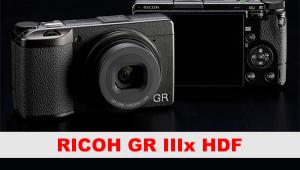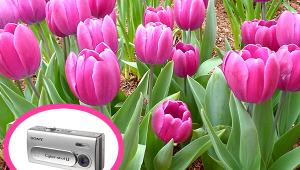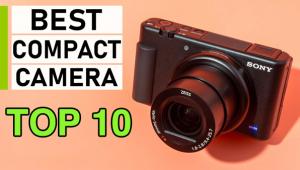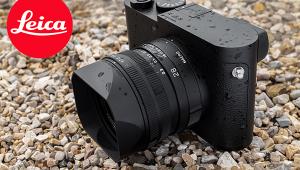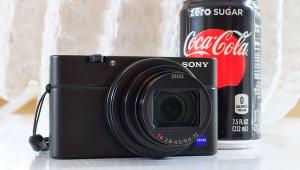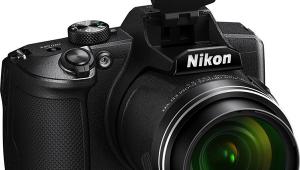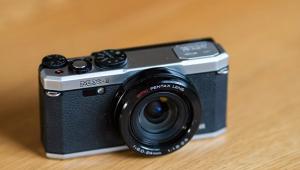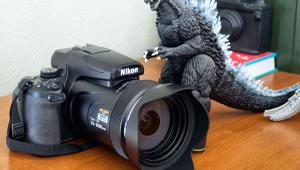High-Resolution Digicams; Do Major Megapixel Counts Aid Or Hinder Image Quality?
Notes On Our Tests
This month-long test was not intended as a scientific experiment for drawing
definitive conclusions about all of the technical aspects involved. That would
require testing numerous cameras--of all brands--under strictly controlled
conditions and using high-tech equipment for image-quality analyses.
Because we were attempting to draw general conclusions about small vs. large
sensors, I have not identified the actual camera models that were used. Also,
one of the D-SLRs produced images in 3:2 format while the other three cameras
employed the 4:3 format, producing photos of a different aspect ratio. That
created a bit of a problem when making prints of a specific size, so all print
dimensions in this report are approximate. Instead, this was an informal review,
intended to provide a quick, practical overview about image-quality issues in
"real world" photography with a few popular cameras of both types.
 |
|
 |
|
|
Until recently, 8-megapixel (MP) resolution was considered to be plenty in
a digital camera with built-in lens, but that has changed with the proliferation
of 10 and 12MP models. By the time you read this, virtually every manufacturer
will be marketing at least one 12MP digicam, either a compact or a "superzoom"
with a 10x or longer lens. By comparison, most D-SLRs are still using sensors
with six, seven, or 10 million pixels. While that may change soon, the digicams
always seem to be a step ahead in the megapixel race. But does that give the
smaller cameras a significant advantage for those who plan to make oversized
prints?
In order to answer that question, I recently spent a month carrying a couple
of 12MP digicams in addition to one of two
D-SLRs with 10MP sensors. Often, I would shoot the same scene with two or more
cameras, using a similar focal length, roughly in the 35-105mm equivalent range.
Later, I compared the numerous images in order to evaluate the relative merits
of both types of cameras. Before considering the outcome of my informal tests,
it's worth reviewing some of the technical concepts that are relevant
to this discussion.
High-Resolution Pros & Cons
There's certainly some benefit to an increased number of pixels in any
type of camera, at least regarding the general principle that the higher resolution
equals more picture data. For instance, a 12MP camera should certainly be better
than a 3MP model when you want large prints with high definition of fine detail.
That's one reason why the sensor manufacturers continue to develop chips
with an increasing number of pixels or photosites. But there's a potential
drawback. As the number of pixels increase (given the same size sensor), the
size of each pixel must be smaller so the sensor can accommodate the millions
of extra light-sensitive sites. And, the vast majority of digicams still employ
very small sensors.
As the pixels become smaller they are less sensitive to light (photons). Consequently,
"analog gain" must be applied at higher amplification to boost the
weaker sensor signal. That produces a lower Signal-to-Noise (S/N) ratio, causing
more obvious digital noise--mottled colored specks and/or graininess--particularly
at ISO 400 and above. Dynamic range can also be narrower. In other words, the
sensor may not be able to record full detail in both highlight and shadow areas
in a contrasty scene. And finally, a camera's lens may have difficulty
in resolving a microscopically small area per site, producing images which can
appear to be soft.
Of course, processing engines have improved, too, with new technology intended
to minimize these issues. But even the best processor's Noise Reduction
(NR) algorithms employ some form of blurring to make the noise pattern less
prominent. That produces a smoother image but can smear or smudge fine detail;
it may also introduce NR artifacts. And the more aggressive the NR system that's
used, the lower the actual resolution will be, particularly at higher ISO levels.
Frankly, those technical issues were already troublesome when 8MP and 10MP digicams
became popular. Based on my tests--and those of my colleague Jack Neubart--it
was obvious that most of those cameras were less than ideal in some respects,
particularly for shooting at high ISO levels. On the other hand, some models--with
superior lenses and NR systems or larger sensors--were better than others.
(You can find Jack Neubart's review of some 10MP digicams in the September
2007 issue of Shutterbug and by using the Search function at www.shutterbug.com.)
Field Test Results
Naturally, D-SLRs have major benefits in several respects: they're faster,
far more versatile in terms of features and available lenses/accessories, equipped
with more effective autofocus systems, and so on. Those are important considerations,
but they have been discussed at length in other articles. So for now, I'll
just provide a summary of the image-quality notes made while reviewing hundreds
of digital photos, most made with each camera's largest/finest JPEG Capture
mode.
The Bottom Line
Based on my extensive work with both types of cameras, I concluded that a D-SLR
with less megapixels is actually preferable to a digicam boasting extra megapixels.
That's true even at ISO 100, at least in print sizes larger than 8x10"
where the cleaner image provides photos with intricate details that are more
clearly defined. While some of my digicam pics are gorgeous in terms of color
rendition, it's easy to achieve a similar result with any image using
Photoshop or other software. Except for greater portability and convenience--valuable
aspects in some circumstances--the higher resolution, 12MP digicams provide
no easily
defined benefit.
 |
|
|
In fact, there's no valid technical reason for the proliferation of
such cameras when some excellent 7MP and 8MP models are already available. That's
because of the problems created by the even smaller pixel size and the excessive
processing necessary to compensate for the lower S/N ratio. Frankly, we're
dealing with the law of diminishing returns here, particularly when working
at high ISOs. In fact, some manufacturers resisted the megapixel race as long
as possible but eventually bowed to consumer pressure. After all, ever higher
megapixel numbers sell cameras, particularly to upgraders who simply don't
want
a D-SLR.
Other brands of 12MP digicams will produce different results than the two that
I used, but it's unlikely that high ISO performance will be dramatically
better. Even in our previous tests of 8MP and 10MP compact cameras, not one
model could match any of the popular D-SLRs in this respect. Do note, however,
that many of the latest digicams--including the two that I used--are
equipped with a true optical or CCD-shift stabilizer. The shake-compensating
mechanism reduces the need for high ISO levels, by providing blur-free photos
at surprisingly long shutter speeds such as 1/10 sec at a 35mm equivalent focal
length.
For the best result with any digicam, use the lowest ISO level that's
practical in any situation. Experiment with raw capture and/or various in camera
NR levels, if those options are available. If you can control the aperture,
shoot at f/5.6 or f/8 for peak optical performance. Regardless of the number
of megapixels, take a conservative approach when deciding on print size. Use
this combination of tactics and you may be pleasantly surprised at the level
of satisfaction that you can achieve. But given our real-world test results,
there's no question that a D-SLR, even one with lower resolution, remains
the best choice for maximum versatility and image quality.
